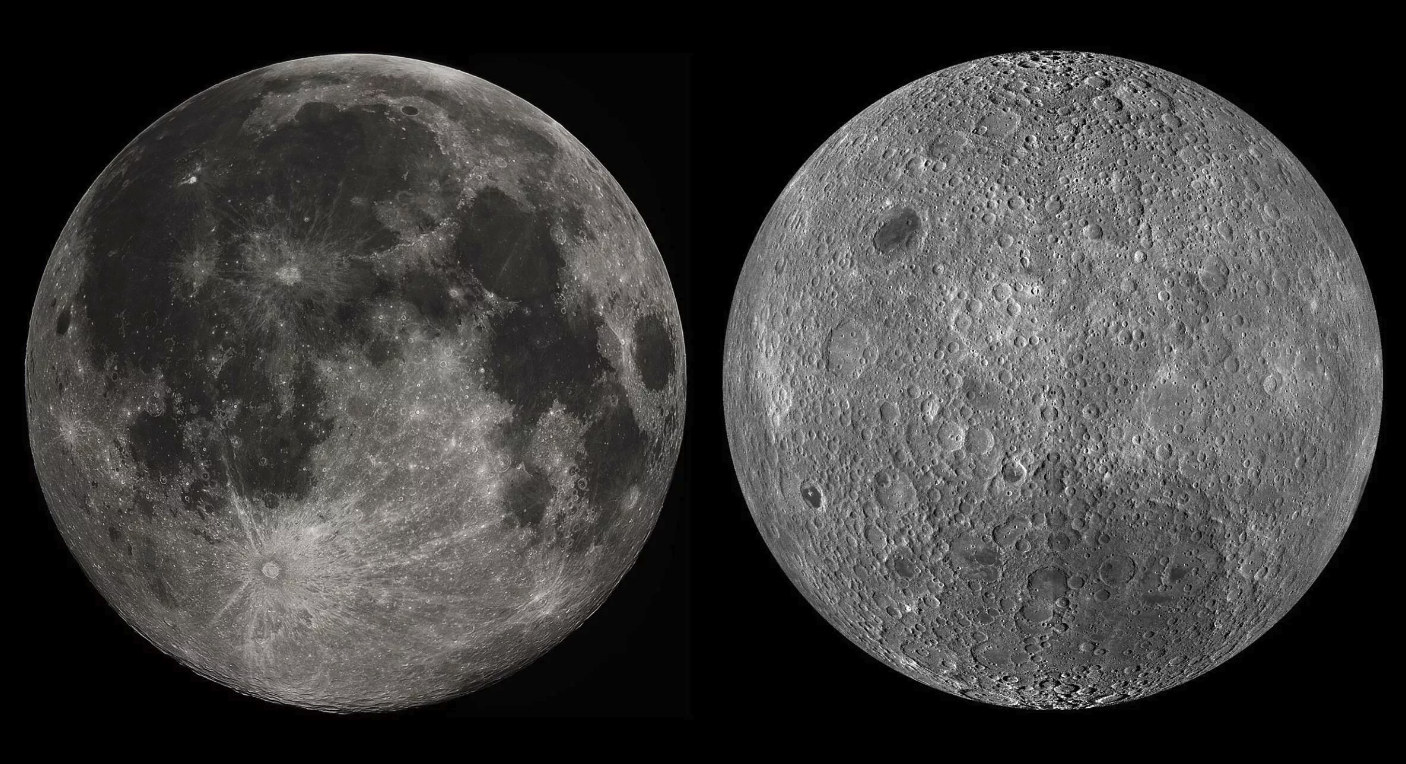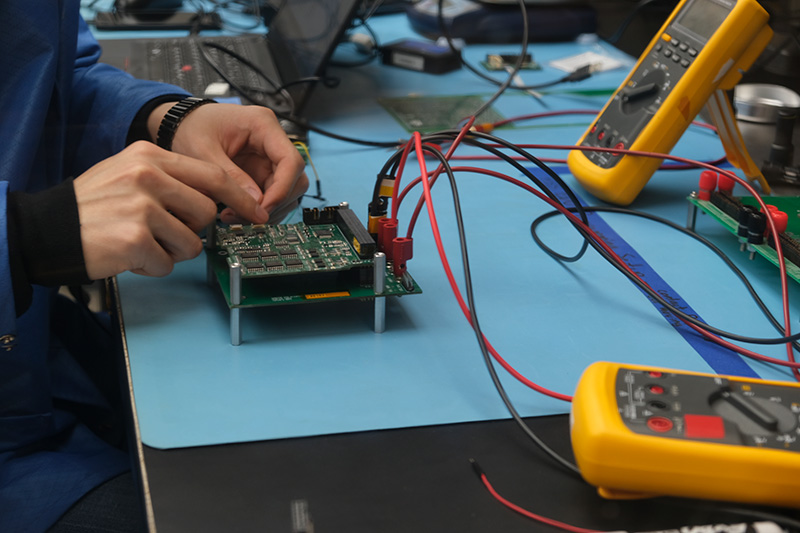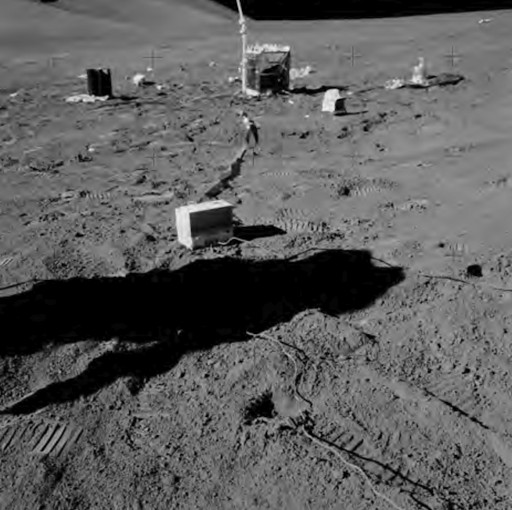
Landing on the Far Side of the Moon
Are there earthquakes on the moon? Researchers at the College of Engineering can soon let you know.

Are there earthquakes on the moon? Researchers at the College of Engineering can soon let you know.
The MXL Lab in Aerospace Engineering is partnering with NASA JPL to land scientific equipment on the far side of the moon, an area that is largely unexplored. The research mission, called the Farside Seismic Suite (FSS), will travel on a NASA-sponsored lunar lander planned for flight in 2025 to the Schrödinger Crater.

Using two seismometers developed from the InSight mission to Mars, FSS will collect data to study the lunar surface and subsurface activity. The project aims to investigate deep lunar structure and the difference between near and farside activity, which will help researchers understand how the lunar crust is affected by the development of impact melts which formed the cratered surface of the moon.
“This really is a phenomenal project with important, useful applications for life on the moon,” comments James Cutler, Associate Professor in the Aerospace Engineering department and faculty lead for FSS. The team is one year into the three year, $1.8 million project.
Why Farside matters
When we look at the moon, we always see the same side, due to the synchronous rotation of the moon around the Earth. All of the crewed activity has landed on this near side of the moon, and the farside has been almost completely unexplored. Satellites orbiting the moon have helped with images and some scientific data, but the first touchdown on the farside of the moon happened only in 2019 by a Chinese lander.
The composition of the farside is thought to be very different from the side we see every night, potentially more safely habitable. Cutler says, “To better understand the potential for viable habitation on the moon, we need to study what we can’t see. This project is a significant step in that discovery.”
Getting there
FSS will be launching on a commercial lunar lander that NASA is acquiring for the mission, a unique operation and evidence of the increasingly growing and complex space industry. After launch, FSS will settle on the surface of the moon – on the other side of the moon. Enter the cubesat team at U-M.
“We’ve launched dozens of cubesats in the last 20 years, with increasing complexity and significance. Our most recent cubesat, MARIO, is sending data to us daily to determine the performance of Piezoelectric materials used as structural components for precise actuation in space.
“FSS is an extension of these CubeSat missions,” comments Cutler.

FSS will be more advanced in light of the additional complexities of the mission. FSS is a self-sufficient payload to be hosted on NASA CP-12 DRAPER lander. With its own independent power, command and data handling, communications, and thermal control. The mission will operate over four months through three lunar nights..
The project’s avionics are adapted from the MXL’s CubeSat systems developed for the MarCO 6U CubeSat. The flight computer is used with no modifications, but the electrical power system is modified for higher power solar panels and the harsh thermal environment of the moon. A custom interface board adapts MarCO avionics to FSS systems providing power and communication pathways.
“It’s a level up on our past hardware,” comments Tran Anh Nguyen (MEng Space Systems ’21), a research scientist with the team. “We adapted and extended our past hardware to handle more power and greater temperature extremes. This will be the coldest and hottest mission we have ever built! “
Once landed on the surface of the moon, the fun starts. Two way communication and data collection commences. This alone involves a new system since there is no line of sight to FSS. The UM team will use an orbiting communication satellite relay system provided and built by the land team to maintain communication and data transmission.
Assessing Seismic Activity
The mission’s data can evaluate the current micrometeorite impact rate and local tectonic activity, direct relevance to mission planning for future lunar occupation.
Night-time data collections are expected to yield the best signal to noise ratio due to reduced thermal noise; the lander creaks and groans as it heats up, like your house on a sunny, cold winter day. During the day, data will be uploaded to the relay and returned to Earth, and commands will be received for customizing FSS operations. At night, the radio will be in hibernation mode to conserve power. If power is available, the receiver will be turned on periodically to listen for commands from Earth.
To be significantly useful, data needs to be collected for a minimum of four months, a design challenge for the team to manage battery life and regulate temperatures.
During launch and lunar transit, FSS systems will be powered down except for the survival heaters. The survival heaters, which keep batteries at operational temperature levels, are always enabled and will activate if temperatures drop below critical levels. FSS batteries will be charged during transit by the solar array or lander power interface as needed.
“Adaption of our systems required careful model-based system engineering analysis to predict expected performance over the wide thermal ranges, -200C to 100C. We also had to be creative in how we connected all the internal systems. For example, the MarCO camera connections are used on FSS to route payload data to the radio. It’s an interesting puzzle of new and old pieces,” said Cutler.

Learning by Doing
“Evolution of the cubesat is in line with our objectives,” comments Cutler. “As an academic institution, our dual priorities are advancing knowledge and providing the next generation of engineering leaders to build on the work we’ve created. FSS is an outstanding opportunity to do both.”
To date, over 160 students have participated in cubesat development in the U-M cubesat program. With a history of innovation, the MXL Lab has increasingly drawn partner organizations for critical projects like FSS.
Working with JPL, NASA, and private aerospace companies has given the students involved increasingly important insights in applying their engineering prowess to complex experiments in industry.
Raymond Liu is a graduate student working in the MXL Lab. “Of all the projects I could possibly work on at U-M, this is by far the best part of my experience here. We are working with students across disciplines and learning how to engineer innovations that haven’t been done before. The collaboration and energy is really exciting.”
While FSS is currently in testing and development mode, Cutler is focused on the outcomes for everyone: “FSS is an extremely exciting project for our lab, and everyone wins with this one. The data we collect can have meaningful implications for future development of lunar occupation and our students have an amazing opportunity to contribute to it all.”
The University of Michigan Aerospace Engineering program has measured seismic activity on the moon before. The historic all-U-M Apollo 15 mission deployed Apollo Lunar Surface Experiments Package (ALSEP) instruments, one of which was a passive seismometer designed to measure seismic activity and physical properties of the lunar crust and interior. Almost 50 years later, U-M is returning to run similar experiments on the far side of the moon.
